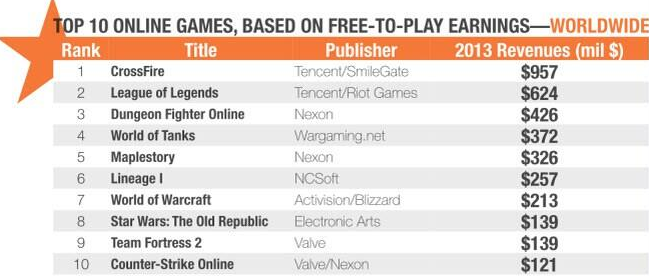Mobile Present – Console Future
How much does it cost to develop a console game, why they don’t pay off, and also once again about why free-to-play (whether we want it or not) is the future, in our material.
Yesterday, Kotaku released a curious material about the cost of modern console products. The numbers there are very large, even if we talk about the current generation of consoles (Xbox 360, PS3), which is rapidly becoming the generation of the past, given the excellent sales of Xbox One and PS4.
For example, the failed Homefront cost the now–dead THQ $ 50 million (as a rule, here and further we are talking about the cost of development – development, where marketing is taken into account, we will clarify), the same amount cost UbiSoft last year’s Tom Clancy’s Ghost Recon: Future Soldier (total costs).
These amounts quite fit into the statement of Sony’s head of global development Shuhei Yoshida that the cost of producing top projects for the PS3 ranged from $ 20 million to $ 50 million.
But are these numbers fighting back? Kotaku did not ask such a question. At the same time, according to Yoshida’s forecast, games for PS4 will cost “a little more” ($50 million – $100 million?).
The development of Beyond: Two Souls cost Quantic Dream $27 million. Sony recently announced that sales of the project have reached the mark of 1 million copies sold. Let’s assume that each version of the game is sold for $60, and those who print, distribute and upload the game take no more than 30%. So we get a “spherical horse in a vacuum” of $42 million in revenue. It would seem cool, they even managed to make money on the game, but we still do not know the marketing budget of the project, which today, as a rule, is comparable to the price of development. As a result, we can say that not the most expensive console project with average sales at best strayed.
The total sales of Disney Infinity, whose total budget was about $ 100 million, grew to 2.77 million boxes sold. That is, it turns out that, ideally, the project also strayed at best (but here, by the way, we do not yet take into account how much the publisher gives to the holders of the platforms).
Of course, when the console market moves away from retail, as the PC games market has already done, it will be possible to potentially earn much more for $60, however, most likely, the price for them will also creep down after that. And the problem of how to make money on single products that are not 99% working blockbusters will remain.
Against this background, the annual revenues of the leading free-to-play titles presented by SuperData look interesting.
It is clear that astronomical sums are also spent on marketing for these titles, not to mention the support of the games themselves, but they definitely beat off production costs and remain in the black.
About this, in fact, and the speech.
And here it is very easy to draw an analogy with the mobile market, where the cost and development of a high-quality final product, which can only be distributed using a paid model, is quite comparable to the cost of a good free-to-play, but which often cannot even pay off. And this is with an average project development cost of $100-$200 thousand by a small team, excluding marketing.
Payback hinders:
- current pricing policy;
- low visibility of projects due to the huge number of proposals;
- traditionally, the tail of sales of final products is low;
- limited by the cost of the LTV product.
Since both the cost of development is growing rapidly at the moment (mobile device capacities are growing, user requirements for content quality are also growing) and marketing budgets, the situation will only worsen in the near future, as, however, we have already written more than once.
And the only way out is to create projects whose distribution model solves the problems of payback, in other words, switch to free–to-play. And if the mobile market has been going through this transition period for several years, then the console is waiting for it in the coming years, when it turns out that the high costs of producing games will not be able to beat off even hit products.


